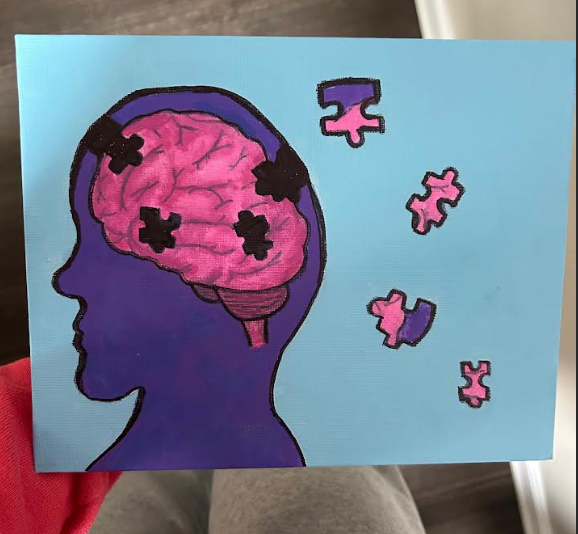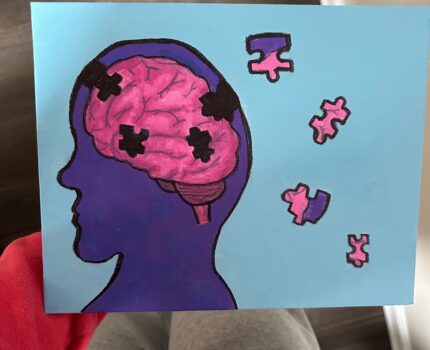Alzheimer’s is a terrible brain disorder that slowly destroys one’s memory and thinking skills, and eventually, the ability for one to carry out simple, everyday tasks. Alzheimer’s is the leading cause of dementia, the inability to remember certain things, perform certain tasks, and generally having an interference with daily activities. Alzheimer’s first affects areas of the brain that work with memory, including the hippocampus and the entorhinal cortex. As the disease progresses, areas in the cerebral cortex are also affected, specifically those that deal with language, reasoning, and behavior in a social sense. Over time this disease is fatal as it affects communication throughout the neurons within your brain, causing the body to lose its ability to function independently.
When Alzheimer’s affects your brain, it causes many neurons in the brain to stop functioning properly, lose certain connections with other neurons, and eventually the neurons die. Many people believe this is what occurs through the natural process of aging, but as you grow older, neurons are not lost largely, the brain mainly shrinks in size. Neurons play a key role in communication throughout the body. Neurons are in touch with many brain cells surrounding them. When a neuron receives a signal from another neuron it generates an electrical charge. This charge travels down its axon or the long, thin fiber that connects neurons to enable communication. Once this charge has traveled through the axon, it releases neurotransmitter chemicals across the synapse or the space between two neurons where they communicate. There is a specific receptor binding site on the neuron known as the dendrite, this is where the neurotransmitter molecules bind. This binding triggers either a chemical or electrical signal that will either stimulate or inhibit a certain activity in the neuron that will be receiving this signal. The process of neuron communication is vital to the human body as it enables us to perform the actions required for everyday activities. Alzheimer’s affects this process in certain parts of the brain as it creates a loss of synaptic connections which is a very key part in the communication between neurons. The synapse is where the two neurons communicate, without the ability for this communication to occur, a loss of function in certain areas of the brain are seen.
Alzheimer’s affects many parts of the brain, but specifically the processes that are vital to neurons and their networks affecting communication between them, metabolism, and repair within those neurons. These key structures within the nervous system mainly relate to the brain and the spinal cord. Within the area of the brain, there is the cerebellum, brainstem, thalamus, hypothalamus, pons, medulla oblongata, the cerebral cortex and the limbic system. The cerebral cortex includes four lobes; the frontal lobe, the parietal lobe, the occipital lobe, and the temporal lobe. The limbic system consists of the hippocampus, amygdala and other structures. The specific key structures that are affected by Alzheimer’s are the hippocampus, the entorhinal cortex, and parts of the cerebral cortex that are vital to language, reasoning, and social behavior. The entorhinal cortex is a key area of the medial temporal lobe that is very important for memory, navigation, and the perception of time. The function of the entorhinal cortex is to provide sensory information to another part of the brain known as the hippocampus which has other functions regarding memory. Through Alzheimer’s, these areas of the brain are damaged in many ways, this damage causes interferences regarding memory, emotions, and social integration. The neurons within the brain must communicate with each other and the rest of the body in order to complete actions within the body. The disease Alzheimer’s disrupts some of these connections within the brain which is why certain actions become disabled.
For the art section of the steam project I created a painting of the brain that is missing puzzle pieces. This correlates to memory loss that relates to Alzheimer’s as the brain tends to lose certain actions that are conducted in specific parts of the nervous system. There is damage seen throughout many areas within the brain, with the painting of a brain missing certain puzzle pieces, this creates an idea of losing many areas within the brain that have vital functions regarding memory and other functions. With Alzheimer’s there may be a sense of losing yourself as you become a different person, through this painting, I illustrated the sense of losing certain parts of who you are by losing parts of your brain.

Works Cited
National Institute on Aging. (2021, July 8). What is Alzheimer’s Disease? National Institute on Aging. https://www.nia.nih.gov/health/alzheimers-and-dementia/what-alzheimers-disease
Thau, L., Singh, P., & Reddy, V. (2022). Anatomy, Central Nervous System. PubMed; StatPearls Publishing. https://www.ncbi.nlm.nih.gov/books/NBK542179/
National Institute on Aging. (2024, January 19). What Happens to the Brain in Alzheimer’s Disease? National Institute on Aging. https://www.nia.nih.gov/health/alzheimers-causes-and-risk-factors/what-happens-brain-alzheimers-disease
Verdi, S., Rutherford, S., Fraza, C., Duygu Tosun, Altmann, A., Lars Lau Raket, Schott, J. M., Marquand, A. F., & Cole, J. H. (2024). Personalizing progressive changes to brain structure in Alzheimer’s disease using normative modeling. Alzheimer’s & Dementia. https://doi.org/10.1002/alz.14174
Davis, A. E., Gimenez, A. M., & Therrien, B. (2001). Effects of entorhinal cortex lesions on sensory integration and spatial learning. Nursing Research, 50(2), 77–85. https://doi.org/10.1097/00006199-200103000-00003
Alzheimer’s Association. (2024). What is Alzheimer’s Disease? Alzheimer’s Disease and Dementia; Alzheimer’s Association. https://www.alz.org/alzheimers-dementia/what-is-alzheimers Tao, R., Yue, C., Guo, Z., Guo, W., Yao, Y., Yang, X., Shao, Z., Gao, C., Ding, J., Shen, L., Chen, S., Jing, N. (2024) Subtype-specific neurons from patient iPSCs display distinct neuropathological features of Alzheimer’s disease. Scopus 20 https://www-scopus-com.uaf.idm.oclc.org/record/display.uri?eid=2-s2.0-85206360030&origin=inward&txGid=4ef10751c43758a324a60c9af63fc983

